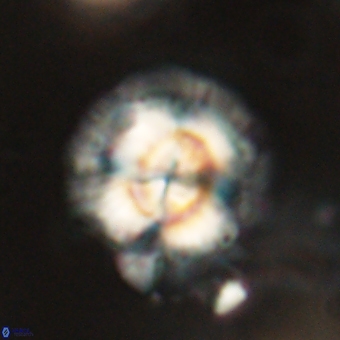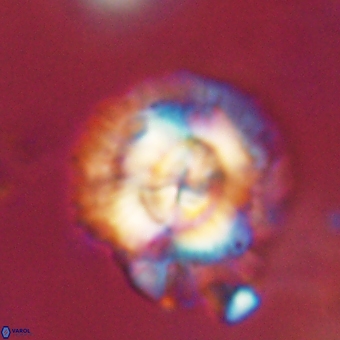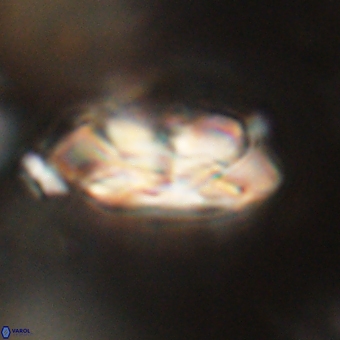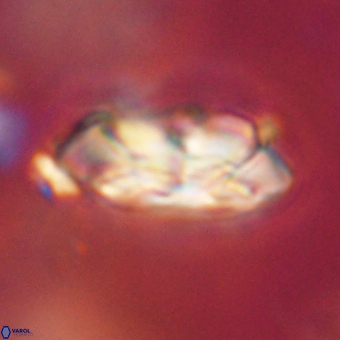Noelia mahaniae
Noelia mahaniae Varol, 2023
A large (9.0–12.0 μm) subcircular species of Noelia with a non-birefringent distal shield, an appressed proximal shield and an elliptical tube cycle that protrudes distally.
In honour of nannofossil specialist Mrs Mahani Mohamed, retired nannofossil taxonomist and biostratigrapher from Petronas, Kuala Lumpur, Malaysia.
Length/Diameter of the distal shield: 10.82 μm (measured in side view in phase-contrast), the width/diameter of the proximal shield: 10.10 μm (measured in plan view in the bright field), the maximum length/diameter of the tube cycle: 7.27 μm (measured in side view in phase-contrast), the maximum height of the distal shield and tube cycle: 4.60 μm (measured in side view in phase-contrast), the free length of the tube cycle: 1.25 μm (measured at side view in phase-contrast).
The distal shield is lenticular in shape, having a shallow depression at the proximal end of the tube cycle occupied by the appressed proximal shield. The combination of the tube cycle and the appressed proximal shield resembles an asymmetrical X-shape in side view. The number of segments that construct the shield is typically between 30 and 50.
In cross-polarised light, with the gypsum plate inserted, when the length of the species is aligned north-south direction, the tube cycle shows the blue sectors aligned to the horizontal axis on the distal side. In contrast, the blue sectors align with the vertical axis on the proximal side (Plate 10, Fig. 10 in Varol, 2023). The entire species appears birefringent in side view.
Noelia mahaniae is easily distinguished from other species of Noelia by having subcircular shields and an elliptical tube cycle.
Varol, O. 2023. New paleocene calcareous nannofossils: Carlamuelleria, Davidbukrya, Mauriceblackia, Noelia and Senelia. Marine Micropaleontology. 180: 1-41.



